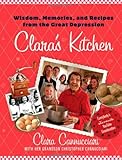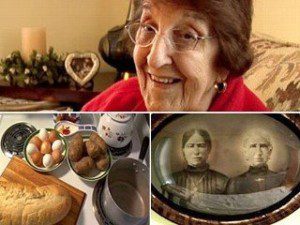By Gaye Levy
Contributing Writer for Wake Up World
Some of the most popular freebie eBooks that I share on my Facebook page have to do with cooking on a budget or with limited supplies. That may be because history has taught us that cooking during the great depression was a sizeable challenge for most families.
In order to prevent going hungry, the smallest amounts of cheap food had to be used in creative ways. Potatoes, pasta, beans, bread and home grown veggies were the mainstay of many meals and usually not all at once. Often times, adults would forego a meal so that their children could eat.
It may not take another depression to bring back the need for depression era cooking techniques. A severe drought or even a catastrophic disaster could affect food supplies. Making it even more difficult is that, in these days of supermarkets, processed food and fast food joints, there seems to be an endless supply of food and many people can not fathom a time when food will not available.
So today I am going to delve into the study of eating better and sustaining ourselves when the budget is meager, the pantry cupboard is bare and the usual food sources no longer exist.
Depression Cooking
Imagine this….
[pro_ad_display_adzone id=”110028″]
True unemployment is in the 20% range and there are no jobs. Droughts have resulted in poor crop yields. Seed production is greatly reduced due to hybridization and the failure of such seeds to accurately reproduce themselves. Meat and vegetable supplies are plagued with e-coli and other diseases. And food banks that in the past would serve 300 families a week are now serving 1000 families a week and most are out of food by mid-week.
Perhaps you don’t even have to imagine these things, for there is much fact laced into this so-called imaginary scenario. The point being that if times are bad – really bad – food, or the money to buy food, will be scarce. And other than stockpiling for such times, the very best way to get by in thin times is to get by with less. Trite as it sounds, that means make do with what you have and, well, simply manage.
With this in mind, I set out to learn about depression cooking, and by that I mean learning how resourceful but food-poor families cooked delicious meals when there was very little in the way of ingredients to choose from. This was the situation during the great depression of the 1930s and could quite possibly be our situation again in the future. (Nothing is certain).
Surprisingly, this was not an easy task. I did not have a grandmother or elderly aunt to ask and I could find a dearth of books in the subject. Until I met Clara Cannucciari, that is….
Welcome to Clara’s Kitchen
Quite by accident, I stumbled upon “Cooking With Clara”. Clara is a ninety-something dynamo that lived through the depression and upon the encouragement of her grandson, became a celebrity chef so to speak on You Tube. I would like to introduce you to her by way of one of her videos:
Depression Cooking with Clara
As you can see, Clara’s pasta with peas is a very clear example of the simplicity and frugality of depression-era meals. In this case, the meal consists of a simple stew of potatoes, onions, canned peas and a bit of tomato sauce. These ingredients plus some salt and pepper, are cooked together with pasta, providing plenty of nutrients for an incredibly cheap price. Did you catch the tip about saving money by turning off the heat and letting the pasta finish cooking from its own heat?
After watching a number of her videos, I decided that I wanted to learn more. I wanted to learn some of the tricks families used to feed hungry mouths when all that was available was some bread, some olive oil and some salt (and yes, you can make a meal out of those few ingredients). All of this and more can be found in the book Clara’s Kitchen: Wisdom, Memories, and Recipes from the Great Depression. And what a delight this is!
 While reading this little book, I learned how to stretch what is available (such as mixing a handful of lentils with pasta), how to conserve, and how to get by food-wise in a potential SHTF economic situation. I learned how Clara and her family both survived and thrived; not only with love and a common bond to help each other out but with common sense and practical household tactics that are still useful today.
While reading this little book, I learned how to stretch what is available (such as mixing a handful of lentils with pasta), how to conserve, and how to get by food-wise in a potential SHTF economic situation. I learned how Clara and her family both survived and thrived; not only with love and a common bond to help each other out but with common sense and practical household tactics that are still useful today.
Not surprisingly, Clara’s father’s garden was the cornerstone of the family’s food supply and nothing was wasted. Leftovers were re-purposed at another meal and excess from the garden was canned. The recipes she describes and shares in the book are mostly very simple – Dandelion Salad, Eggs and Potatoes, Pasta with Beans, Pasta with Broccoli, Pasta with Peas – well, you get the drift. Because of her heritage most of her dishes stem from traditional Italian cooking, with lots of pasta, greens, and eggplant, supplemented with eggs, potatoes and tomato sauce. Meat is used more as a condiment and even then, mostly for special occasion dishes or for meals on Sunday after church.
Even though these are simple peasant-type foods, Clara somehow makes all of these things seem utterly delicious.
Beyond the recipes, this small book is full of memories, photos, and recipes from the 1920s and 30s. It is a peek into a slice of time when the economy was in the dump and people struggled to simply get through the hard times, one day at a time. It is about hardship as much as it is about love and about strength. And of course, it is about the food and about cooking techniques required by the era and the times.
I would like to recommend this book to anyone who wants to learn how to get by, and more specifically, how to eat well with less. Pick a recipe or two and give them a try. See if you like the results and adapt if need be. The time to learn is now, while we still have choices and luxury of time. Whereas we may never have to make a satisfying meal out of old, hardened bread and olive oil, wouldn’t it be nice to know you could – just in case?
Enjoy your next adventure through common sense and thoughtful preparation!
Gaye
Further articles by Gaye Levy:
- Six Ways to Get Ready for Going Off-Grid
- DIY Miracle Healing Salve
- The Powerful Healing Qualities of Rosemary Essential Oil
- 15 Alternative Uses for Honey
- Vermiculture: How To Build A Worm Bin the Cheap and Easy Way
- Spices for the Survival Pantry
- 21 Home Remedies for a Toothache Emergency
- The Miracle of Tea Tree Oil: 80 Amazing Uses for Survival
- 10 Simple Steps Toward Self-Sufficiency
- Creating a Healing Garden: 9 Healing Herbs You Can Grow Yourself
About the author:
 Gaye Levy, also known as the Survival Woman, grew up and attended school in the Greater Seattle area. After spending many years as an executive in the software industry, she started a specialized accounting practice offering contract CFO work to emerging high tech and service industries. She has now abandoned city life and has moved to a serenely beautiful rural area on an island in NW Washington State.
Gaye Levy, also known as the Survival Woman, grew up and attended school in the Greater Seattle area. After spending many years as an executive in the software industry, she started a specialized accounting practice offering contract CFO work to emerging high tech and service industries. She has now abandoned city life and has moved to a serenely beautiful rural area on an island in NW Washington State.
Gaye lives and teaches the principles of a sustainable and self-reliant lifestyle through her website at BackdoorSurvival.com. At Backdoor Survival, she speaks her mind and delivers her message of prepping with optimism and grace, regardless of the uncertain times and mayhem swirling around us. You can find Gaye through her website BackdoorSurvival.com, on Facebook, Twitter and Pinterest.
If you have not done so already, please be sure to like Gaye’s Facebook page, which is updated every time there is an awesome new article, news byte, or link to a free survival, prepping or homesteading book on Amazon. In addition, when you sign up to receive Gaye’s email updates you will receive a free, downloadable copy of her e-book The Emergency Food Buyer’s Guide.
[pro_ad_display_adzone id=”110027″]







